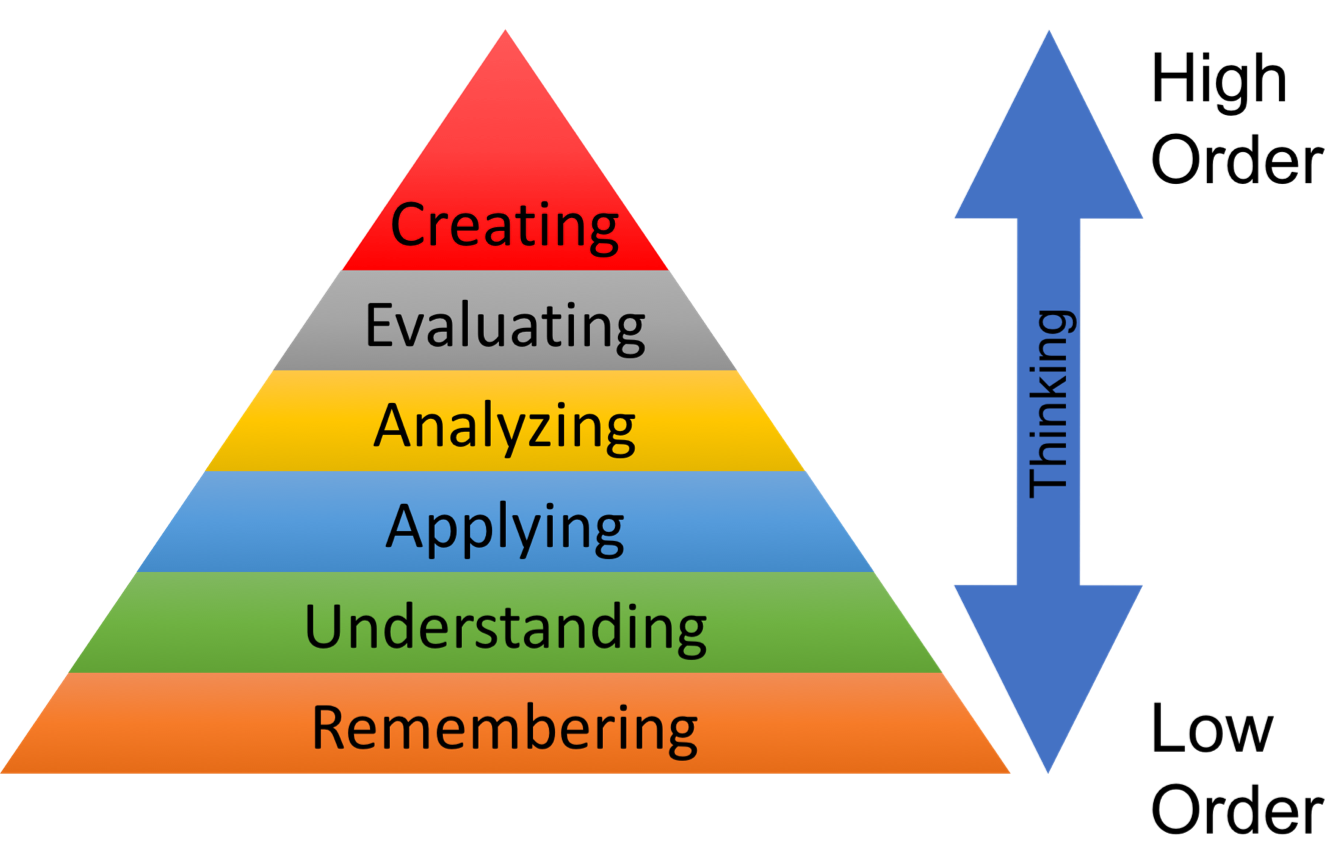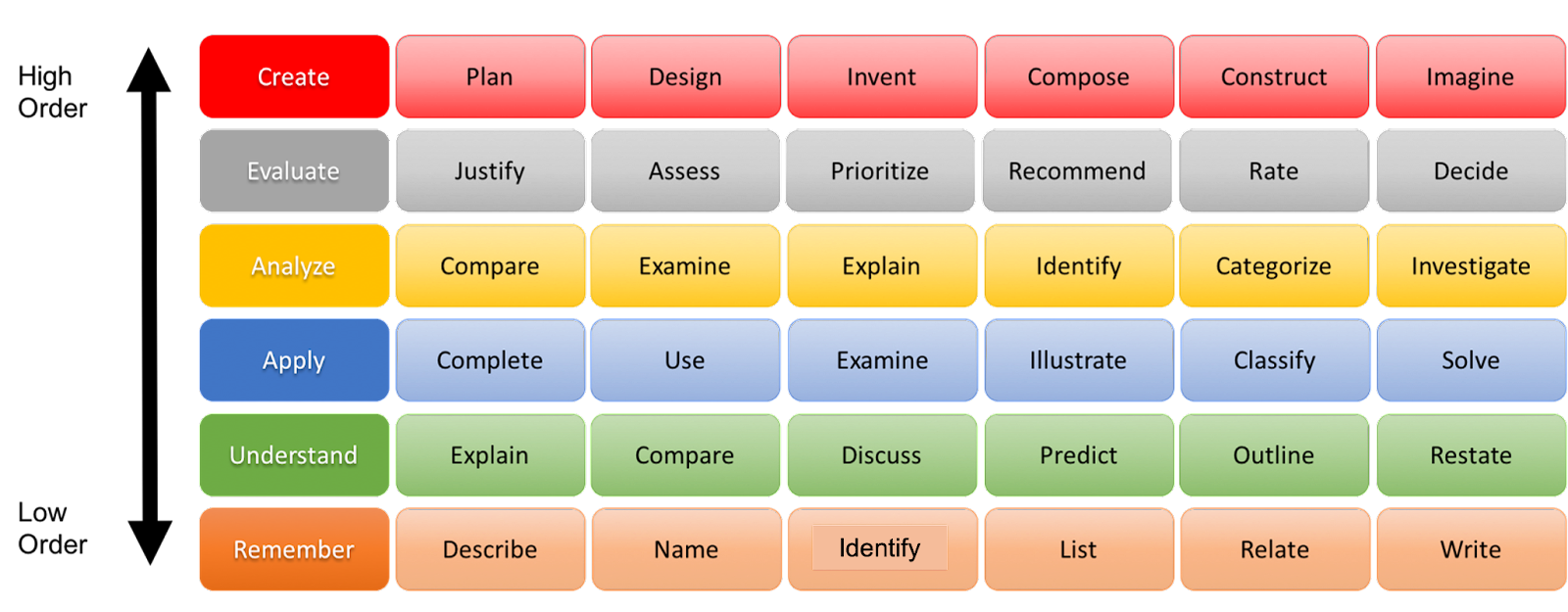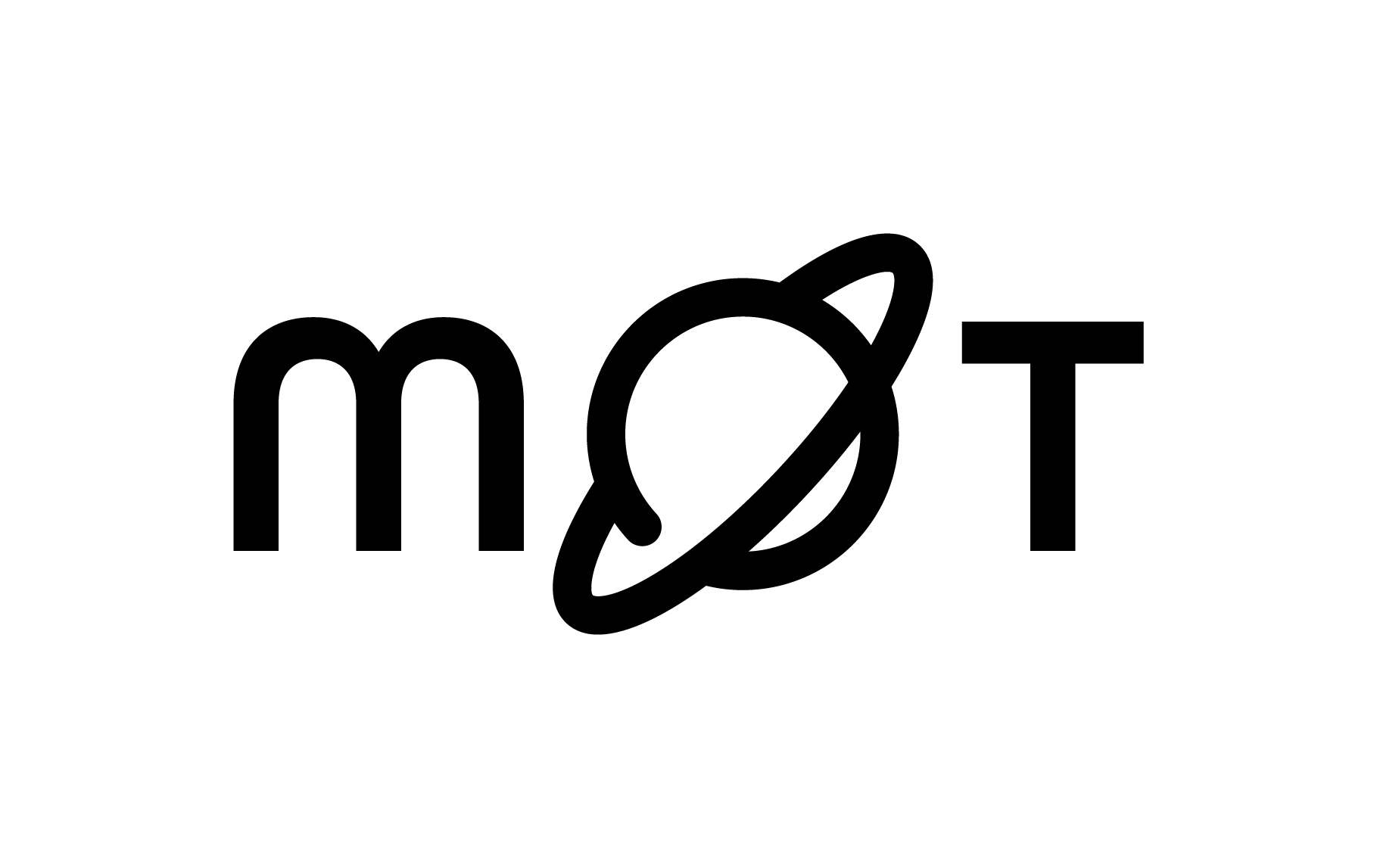By the end of this guide you will be able to:
- Recognise that Bloom’s Taxonomy model makes it easier to create outcomes
Knowing what outcomes are and their benefits is useful but it doesn’t help you create them easily or effectively. However, a model called “Bloom’s Taxonomy” does!
Making Learning Outcomes Is Blooming Easy
An educational psychologist named Benjamin Bloom (plus a bunch of other brilliant folks that revised his work) came up with a six-category hierarchy of different learning levels called Bloom’s Taxonomy (see figure 1.)

Figure 1: Bloom’s Taxonomy
The hierarchy ranges from low-order thinking skills (remembering) to high-order thinking skills (creating). Where the higher the order of thinking, the deeper your learning and understanding would have to be to achieve that learning outcome. In other words, it’s very easy to just remember something, but you have to have deep knowledge of something to be able to create a new thing based on that knowledge. For example, it would be relatively easy to remember what a testing plan is but much harder to create a testing plan.
When learners meet a new topic, it’s good practice to set your outcomes towards the bottom of the hierarchy (lower order thinking skills), with the outcomes being set further up the hierarchy (higher order thinking skills) as the session progresses and as your learners get to grips with the topic. Likewise, it would be good practice to set your outcomes towards the higher end of the hierarchy if you had advanced learners taking an advanced-level piece of content.
How the Hierarchy Helps You Create Outcomes
Many education experts have associated numerous action verbs with each of the six categories of learning in Bloom’s Taxonomy to help content creators design specific and measurable learning outcomes. Figure 2 below gives you a few examples of verbs associated with the different levels of learning. Many more verbs have been associated with each category than are depicted in the figure below (see our digital verbs list for more action verbs), but this is a workable example.

Figure 2: Action verbs associated with the 6 categories of Bloom’s Taxonomy
Example Development Of Learning Outcomes
Let’s look at the development of some example learning outcomes using Bloom's Taxonomy and the action verbs in Figure 2.
At the start of content creation, generally, we want to create outcomes towards the lower order thinking categories (so “Remembering” and “Understanding.”) In this example, we’ve got 12 verbs that can be used to develop a learning outcome that informs learners of what they can expect to be able to achieve. If our content were this guide on ‘Getting Started With Learning Outcomes’ for beginners then our first outcome could look something like this:
Identify learning outcomes and their key features
We now want to move up the hierarchy as successful learners progress through the content and can achieve more complex outcomes as their learning deepens. So for this guide on ‘Getting Started With Learning Outcomes’ our outcomes could look something like:
By the end of this guide, you will be able to:
Identify learning outcomes and their key features (Remember)
List benefits of creating learning outcomes (Remember)
Compare how easy it is to create outcomes with Bloom’s Taxonomy versus no model (Understand)
Use Bloom's Taxonomy and its associated verbs to develop learning outcomes (Apply)
NB: Bloom’s Taxonomy categories (in parenthesis and in bold) are only present to demonstrate that the outcomes are going from lower to higher order thinking skills, they don’t need to be shared with learners.
You can see in this example that we start at the bottom of the hierarchy with remembering new information and move up to applying that new knowledge by the end. However, it is important to know that you don’t need to move up the hierarchy one level at a time. It is just a general rule of thumb that you start near the bottom of the hierarchy when learners meet new content and work your way up as they become more knowledgeable and skilled. In a single piece of content, you can go up and down the hierarchy as needed. It all depends on what you want your learners to walk away with and how often you introduce new concepts throughout the content.
Using Outcomes to Develop Content and Activities
The outcomes in our workable example are very concise and measurable, and this clarity can provide motivation for learners to complete your lesson. But what’s just as good is that these outcomes can actually help you identify essential content to cover and even generate some activity ideas. For example; if we were to think about the second outcome: “List benefits of creating learning outcomes.” This outcome could help us come up with content and activity ideas, for example:
Content Idea - give all the information learners need to achieve the outcome | Activity Idea - set a task where learners can check if they can meet the outcome |
Provide a list and explanation of all the benefits of creating learning outcomes at the start of content creation. Provide lists for both the content creator and the learners. | Set a task where prospective content contributors list which learning outcome benefits will be most useful for them when creating content. |
Time to Reflect
Hopefully from learning about Bloom's Taxonomy and from seeing a working example of how the model and its associated verbs can be used to develop outcomes, content and activities to check learning and help learners progress. You can appreciate that Bloom's Taxonomy Model makes designing and creating learning content so much easier than with no model or support.
Think back to a time when you had to create a guide or piece of content to teach another person something and consider how things would be different if you had access to Bloom’s Taxonomy.
Up Next
